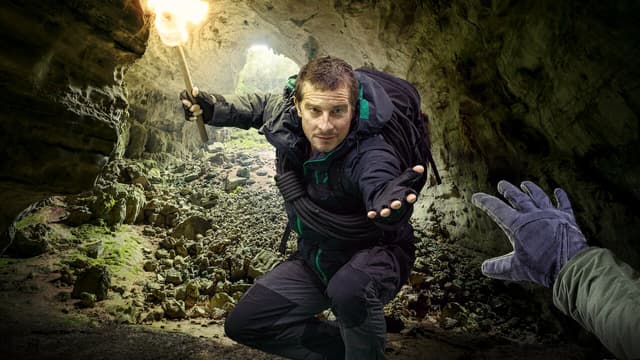Rick Webb | November 12, 2021
The Taylor's Version Edition
On music, rights, and re-recording
Recommended Products

A completely re-recorded version of Taylor Swift's album 'Red', the third album she recorded during an extraordinarily productive pandemic period.

A completely re-recorded version of Taylor Swift's album 'Fearless', as part of her project to re-record her Big Machine-owned back catalog.
Rick Webb (RLW) is a prolific writer, thinker, podcaster, and consumer of media. He’s also the only person I’ve ever met who thinks and speaks in bullet points. He previously contributed The Digital Advertising Edition. - Noah (NRB)
Rick here. Happy November 12, or, if you’re a Swifty, release day for Red (Taylor’s Version), as well as the accompanying 13-minute film, “All to Well.”
“But wait a minute,” you say. “Didn’t Taylor Swift’s Red come out in 2012?” Why yes, yes it did. Good memory! Today, Taylor is releasing a new, completely re-recorded version of Red, the third album she recorded during an extraordinarily productive pandemic.
To understand why this is happening, we have to delve into the world of music licensing. But first, some back story.
In 2005, a young 16-year-old Taylor Swift signed her first recording contract with a label named Big Machine, headed by a man named Scott Borchetta, and co-founded by relative unknown Toby Keith, who rapidly disappears from our story. Big Machine and Taylor released beautiful, wildly popular music together, making her one of the top-selling artists of all time.
Taylor’s deal with Big Machine was a standard record label deal, insofar as Big Machine owned the masters to Taylor’s recordings. If you’re not steeped in music licensing, any song you hear on the radio, on television, in a movie, or a Tik Tok has two royalty streams: a songwriting stream and a recording stream. Taylor is a co-songwriter on virtually all her songs and that revenue stream is a separate deal. The recording revenue stream, or “masters,” for her first six albums is owned by Big Machine. This even includes the artwork.
In 2018, Taylor’s deal with Big Machine was ending, and she was keen to a) obtain ownership of her first six masters, and b) retain ownership of any new masters going forward. It was clear Swift could accomplish the latter with a new record deal, but abandoning Big Machine would mean abandoning her first six recordings. Around the same time, Big Machine was put up for sale. Swift hoped to acquire her recordings and entered negotiations with the label. Stories differ as to exactly what happened next, but in July 2019 Big Machine was sold to record exec Scooter Braun for $300 million.
Taylor was not happy, both with being shut out of the sale and to whom, specifically, the catalog was sold. Swift and Braun clearly have some irredeemable bad blood. After she signed a new deal with Universal Music Group—one that would allow her to retain her future masters—she announced she would completely re-record her Big Machine-owned back catalog. Because she already had control of how her songs are used, but not these recordings, she could make new versions of all the songs—versions that would be both better recordings and 100% owned by her. The goal was to deprive Big Machine of its most lucrative revenue stream—its royalties from Swift’s first six albums. Many at the time believed that this was primarily a negotiating tactic. It was not. If anything, it shows a profound commitment to a stance.
In November 2020, Braun sold the rights to Swift’s catalog to a PE firm fund named Shamrock Capital, earning from the sale more than he paid for all of Big Machine (there is a separate story to be told about the financialization of recording rights). There was briefly some hope that these new owners could end the dispute. But after learning that Braun would still be participating in the profits of her catalog after the Shamrock acquisition, Swift pledged to continue on with her re-recording project.
And so, in spring of 2021, Taylor’s re-recording project began to see the light of day. The first album Fearless (Taylor’s Version) was released on April 19. The original Fearless was still number 19 on the charts that week. Taylor’s version debuted at number 1 and the original eventually fell off the list. Released on the heels of Swift’s pastoral pandemic albums Folklore and Evermore, Fearless (Taylor’s Version) was her third number one album in less than a year.
After Fearless (Taylor’s Version), many fans assumed the next record to be re-recorded would be her follow-up album, Speak Now. However, on June 18, Swift announced that the next album to get the re-recording love would be Red. Swift’s logic is her own, but Red is her best-selling album in America, and would thus have the largest potential impact on royalty receipts.
Why is this interesting?
While the initial sales of Taylor’s versions are promising, her success in the larger battle is still not assured. There are serious obstacles to Swift successfully closing off revenue from Braun and Shamrock. Will Spotify, Apple Music, and other streaming services highlight Taylor’s versions in preference of the originals? Will fans stop buying original Red merch? Replace the old versions in their hearts with the new ones? TBD.
Many artists have had disputes with their record labels, and many artists have attempted to re-record their albums in an attempt to redirect a royalty stream back towards them. Electric Light Orchestra, Squeeze, Def Leppard, and Blondie have all made the effort. It has usually failed.
However, given her unprecedented star power, rabid fan base, savvy use of the internet, clever use of unreleased B-Sides, merchandising sophistication, and the initial promise of Fearless (Taylor’s Version), Swift may be the artist to finally break the curse. (RLW)
Quick Links:
Erin Griffith’s ongoing coverage on Twitter of the Elizabeth Holmes trial. (RLW)
Knight Rider Historians, doing the important work of meticulously preserving the history of this seminal sci-fi/artificial intelligence TV show. (RLW)
Mr. Beast, Mark Rober, and many other YouTubers are raising $30 million to remove 30 million pounds of trash from our seas. (RLW)
Drummer Damon Krukowski on piracy and Japanese psych legends Les Rallizes Dénudés. (RLW)
[Sponsored: Atlas Bars are GMO-free and keto-friendly with 15 grams of protein and just a gram of sugar. We’ve tried Atlas and they are very good. Use this link for WITI readers to get 20 percent off. Get started with the sample pack.]
WITI x McKinsey:
An ongoing partnership where we highlight interesting McKinsey research, writing, and data.
The future of climate tech. One crucial component in facing the climate crisis? New technologies, such as better batteries for electric vehicles, meat alternatives, or improved energy storage. While significant progress still needs to be made, the drive to develop and scale climate tech is accelerating. A new article lays out five themes that could attract $2 trillion of annual investment by 2025.
--
Thanks for reading,
Noah (NRB) & Colin (CJN) & Rick (RLW)
—
Why is this interesting? is a daily email from Noah Brier & Colin Nagy (and friends!) about interesting things. If you’ve enjoyed this edition, please consider forwarding it to a friend. If you’re reading it for the first time, consider subscribing (it’s free!).

